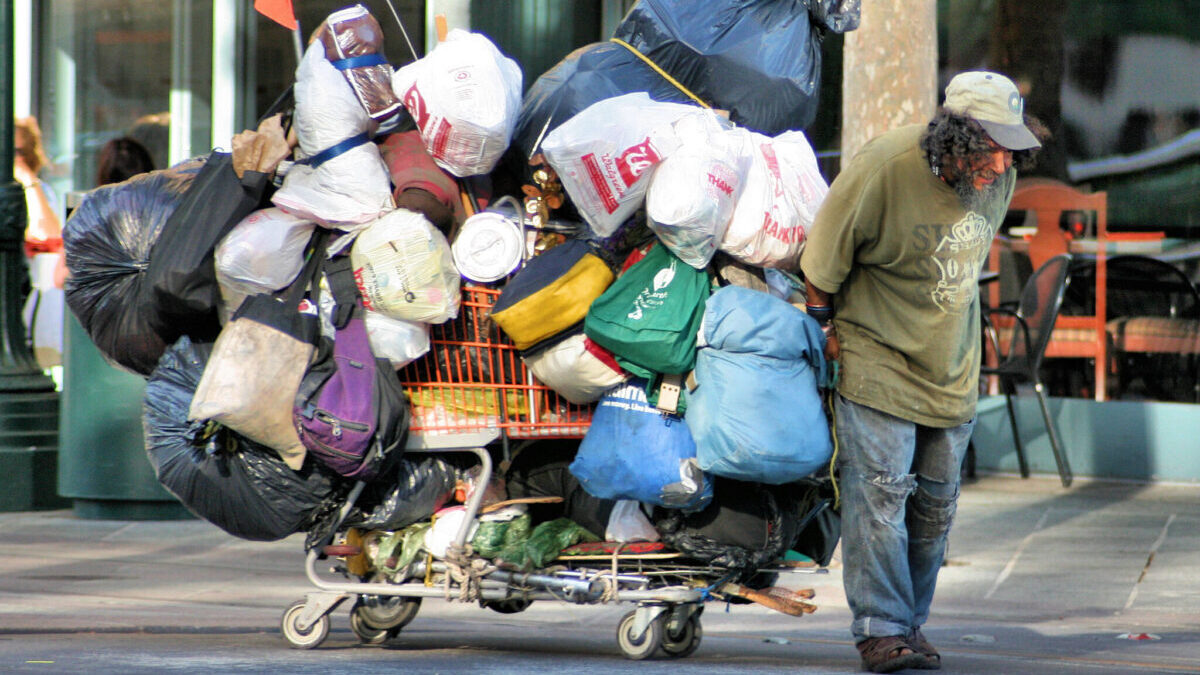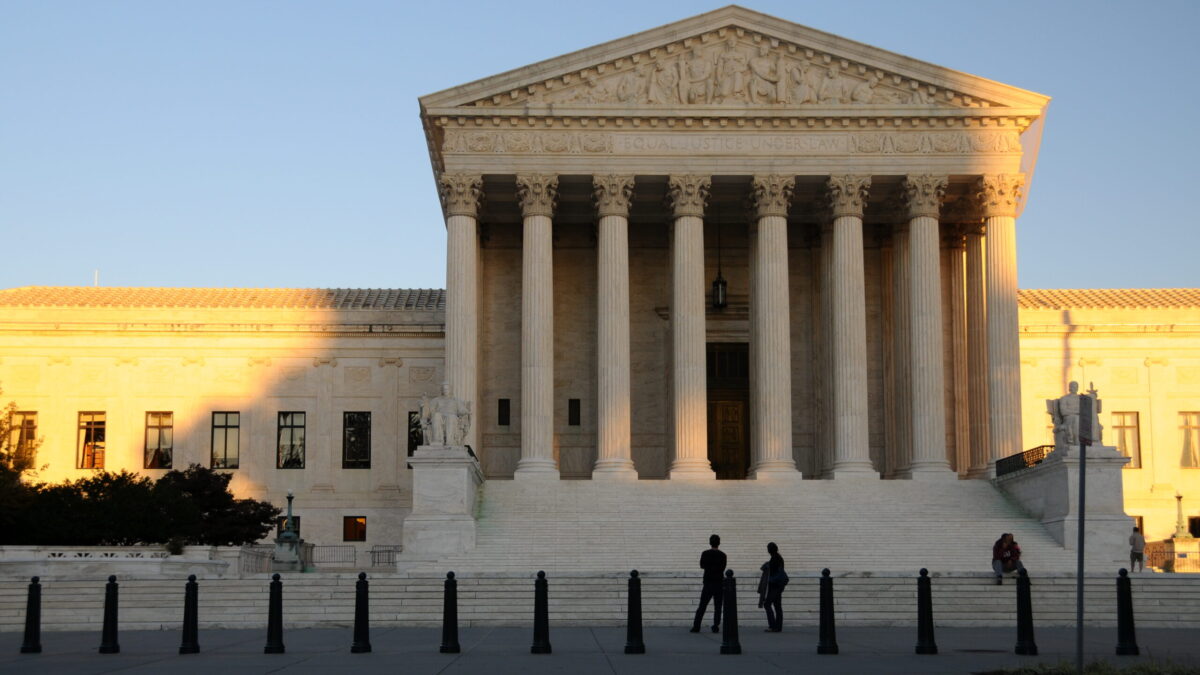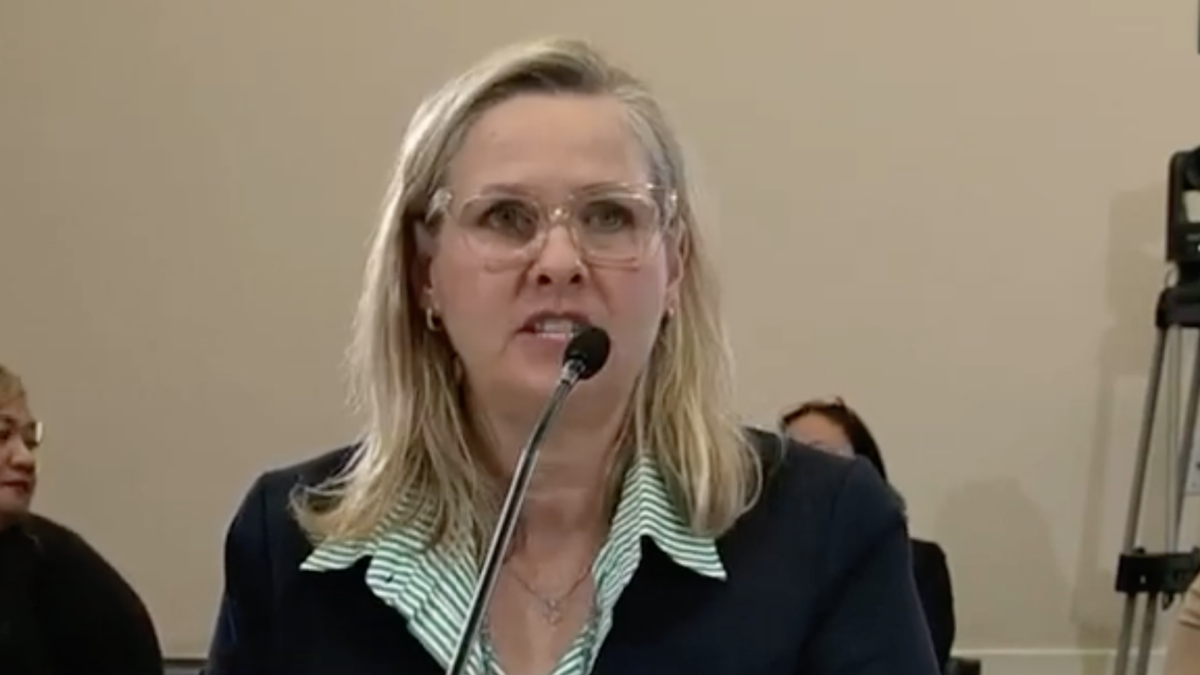In Austin, Texas, in a 24-hour period in March less than a mile apart, a woman was punched several times and sexually assaulted, suffering a split lower jaw and bruises over her body; then a building was burned down, damaging adjacent buildings, causing about $1.5 million in damage. The common thread: Homeless men living on the street are the accused.
The homeless are on the streets because they don’t have homes — or so many of their so-called advocates claim. They see homelessness as a disease and prescribing housing as the first step to a cure — with housing seen as a right, like they believe health care should be.
But these advocates ignore the reasons at least three out of every four people experiencing homelessness end up sleeping on the sidewalks and asking passersby for cash: They suffer from untreated mental illness, drug or alcohol addiction, or both. Their chaotic, self-destructive behavior caused them to be unemployable, and they burned the bridges to their immediate family.
In 1955, before the advent of commercially available psychotropic drugs to treat mental illness, some 550,000 Americans were confined in mental asylums, with one of the common “cures” being a frontal lobotomy. Today, that number stands at about 40,000. But accounting for population growth, if the mental health system of 65 years ago were in use today, there’d be more than 1.1 million people institutionalized.
This 1.1 million figure is interesting for the following reason: Large numbers of people with mental illness are, with drugs or other therapies, able to function as productive members of society — but evidence suggests equally large numbers aren’t, whether because they’ve never been diagnosed and treated, or because they have, but for some reason didn’t follow through on the regimen prescribed for them.
Almost 600,000 Americans were homeless in 2022, of whom about 40 percent, or a bit less than a quarter of a million, were estimated to be living on the streets rather than in shelters. Many of these individuals cycle in and out of local jails for committing crimes such as theft, assault, and vandalism.
The Seattle metropolitan area has grappled with its homeless challenge for many years now. But the more money it throws at the problem, the worse it gets. In 2018, Chris Rufo calculated that more than $1 billion annually was spent to address homelessness — almost $100,000 a year for every homeless person. Moreover, because of the way the taxpayer funds are spent — on housing with no rules or expectations of treatment (a policy known as “Housing First”) — addiction, violent crime, sex trafficking, and thievery have increased, especially in neighborhoods hosting facilities that house more than a couple dozen homeless people in one place.
Austin’s Experience
Returning to Austin, the city’s residents have suffered leftist public policy firsthand as the city council defunded and disempowered the police while welcoming the homeless. And, as Rufo has found, the homeless are attracted to locations more amenable to their lifestyle, especially when they’re offered shelter with no rules. In short order, the unhoused — the new euphemism for many people who, at one time, were called bums, tramps, vagabonds, vagrants, or beggars — filled the sidewalks, parks, and freeway underpasses.
Austin permitted camping on July 1, 2019. The Austin Police Department subsequently reported that more than half, 19 of 36, of pedestrian fatalities that year were among the unsheltered population. The police department, likely under pressure from the left-wing city council, stopped providing details on pedestrian deaths after 2019.
After the change in camping policy, the number of unhoused people in the Austin and Travis County area jumped 134 percent, from 1,104 to 2,374, over four years from 2018 to 2022.
Predictably, the city’s pedestrian deaths spiked 59 percent from 2018 to 2022, from 32 to 51, a local NPR station calculated. The Austin City Council erased restrictions on living on public property in 2019. Extrapolating from 2019’s numbers, 27 of 2022’s pedestrian fatalities were likely homeless at the time of their deaths.
The damage caused by the homeless extends beyond self-harm. When a homeless person assaults or rapes someone, shoplifts from a small business, or gets hit by a driver who is subsequently traumatized, public safety and peace of mind are shattered. Added to that, homeless individuals suffering from an overdose or a mental crisis make repeated trips to emergency rooms or the local jail that cost millions of dollars.
As the officers of the Austin Police Department contend with left-wing policies that prevent them from keeping public order — or punish them if they do — morale has plunged. Austin also cut $150 million from the police budget in 2020, including canceling cadet classes due to city council concerns about recruiting and training (the cut classes were Austin PD’s most diverse yet). Thus, Austin, like other major cities, has seen an outflow of police officers. It’s gotten bad enough that in late March it was announced that Texas state troopers will help patrol Austin.
Left-wing mismanagement of our urban areas can’t continue indefinitely. If the voters and those they elect won’t change, the cities will decline and lose relevance, following the path of Detroit, Chicago, San Francisco, and now even Los Angeles. The other possibility is that frustrated residents and courageous politicians will buck leftist orthodoxy and work to reform civil commitment laws and drug treatment systems, and start to put criminals behind bars.









